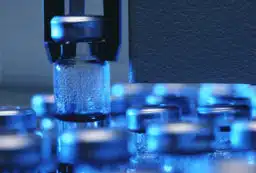Compounds that affect respiratory health have been found in biodiesel exhausts. This might lead to restrictions on the use of this form of biofuel as an alternative to fossil fuel, according to researchers from the Queensland University of Technology (QUT).
“With fossil fuel reserves dwindling, developing renewable alternative fuels is important,” postdoctoral fellow Dr Nicholas Surawski says, “but we should be particularly careful to protect against unwanted respiratory illness when we adopt new transport fuels.” The team is now looking at ways of cleaning up biofuel exhausts.
Nicolas is one of the 2012 Fresh Scientists, presenting his work for the first time to the public.
The team looked at a range of biodiesels made from soy, tallow and canola.
Using specialised analytical monitoring equipment developed at the University, they discovered that burning diesel fuels with a high percentage of biodiesel (up to 80%) produced higher emissions of compounds linked to respiratory disease. These biologically active compounds are called reactive oxygen species and form on surface of small soot particles in the exhaust emissions. Reactive oxygen species can lead to the cell damage called oxidative stress which, over long periods of time, can progress to serious respiratory disease.
“This is a very important discovery,” Nicholas says. “Now we’ve identified a component of the emissions that causes the problem we can start to look for solutions.
The research team, led by Professor Zoran Ristovski, is now focusing on understanding the way the reactive oxygen species in the emissions are generated, and on how to remove them.
This work is aimed at providing the transport industry with fuels that not only have a favourable environmental impact, but also that place a lesser burden on respiratory health.
Images and video footage to support the story are available on request from the research team.
The research was published in Environmental Science and Technology.
For interviews:
- Nicholas Surawski (CSIRO Ecosystem Sciences) email: nicholas.surawski@csiro.au
- For Fresh Science contact AJ Epstein on 0433 339 141 or aj@scienceinpublic.com.au or Niall Byrne, 0417 131 977 or niall@scienceinpublic.com.au

Nicholas Surawski describing his research in the time it takes a sparkler to burn. Credit: Thami Croeser





 Fresh Science is on hold for 2022. We will be back in 2023.
Fresh Science is on hold for 2022. We will be back in 2023.